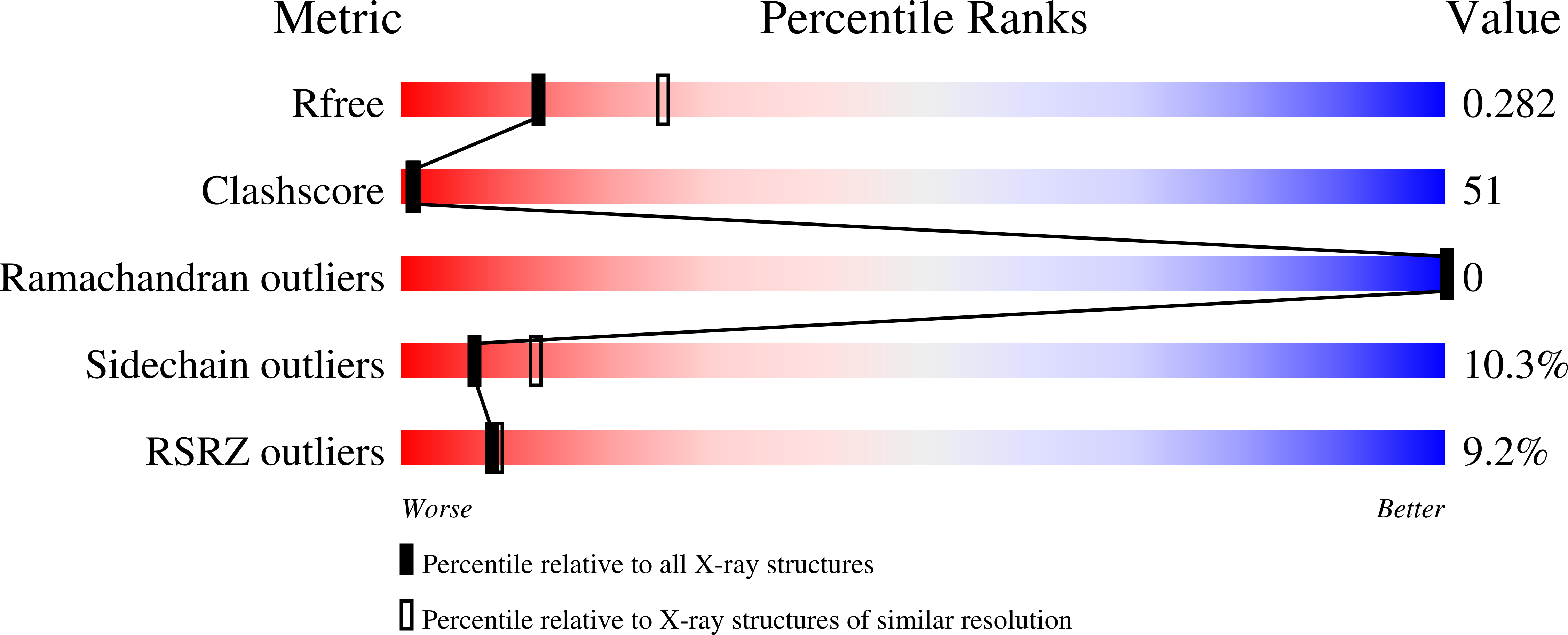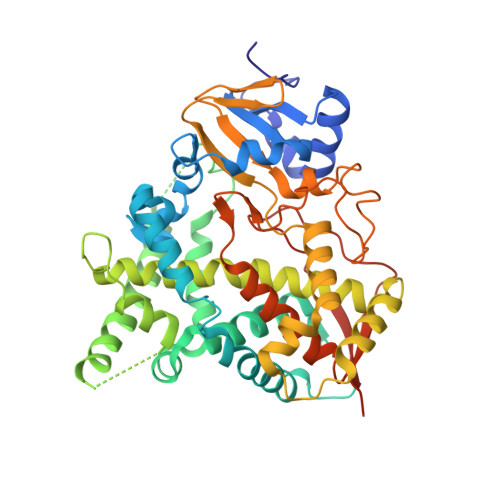Structural Basis for Rational Design of Inhibitors Targeting Trypanosoma Cruzi Sterol 14Alpha-Demethylase: Two Regions of the Enzyme Molecule Potentiate its Inhibition.
Friggeri, L., Hargrove, T.Y., Rachakonda, G., Williams, A.D., Wawrzak, Z., Di Santo, R., De Vita, D., Waterman, M.R., Tortorella, S., Villalta, F., Lepesheva, G.I.(2014) J Med Chem 57: 6704
- PubMed: 25033013
- DOI: https://doi.org/10.1021/jm500739f
- Primary Citation of Related Structures:
4CK8, 4CK9, 4CKA - PubMed Abstract:
Chagas disease, which was once thought to be confined to endemic regions of Latin America, has now gone global, becoming a new worldwide challenge with no cure available. The disease is caused by the protozoan parasite Trypanosoma cruzi, which depends on the production of endogenous sterols, and therefore can be blocked by sterol 14α-demethylase (CYP51) inhibitors. Here we explore the spectral binding parameters, inhibitory effects on T. cruzi CYP51 activity, and antiparasitic potencies of a new set of β-phenyl imidazoles. Comparative structural characterization of the T. cruzi CYP51 complexes with the three most potent inhibitors reveals two opposite binding modes of the compounds ((R)-6, EC50=1.2 nM, vs (S)-2/(S)-3, EC50=1.0/5.5 nM) and suggests the entrance into the CYP51 substrate access channel and the heme propionate-supporting ceiling of the binding cavity as two distinct areas of the protein that enhance molecular recognition and therefore could be used for the development of more effective antiparasitic drugs.
Organizational Affiliation:
Department of Biochemistry, School of Medicine, Vanderbilt University , Nashville, Tennessee 37232, United States.
















